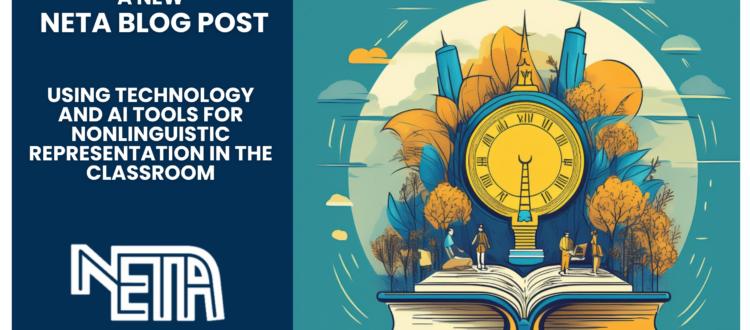Using Technology and AI Tools for Nonlinguistic Representation in the Classroom
Written By: Jennifer Davis, EdD
ESU 1
Nonlinguistic representation is a powerful learning strategy that allows students to create mental images or visual representations of information. It involves using visual aids, diagrams, charts, graphs, and other nonverbal methods to enhance understanding and retention of knowledge. This strategy is particularly beneficial for students as it taps into their visual and spatial intelligence, helping them make connections, organize information, and deepen their understanding of concepts.
Research has shown that nonlinguistic representation can significantly improve students’ learning outcomes. When students engage in creating visual representations, they are actively processing information, which enhances their comprehension and retention of the material. It also supports students’ ability to transfer knowledge to new situations. When students can mentally visualize a concept, they are more likely to apply it in different contexts and solve problems effectively. This transfer of learning is crucial for developing critical thinking skills and promoting deeper understanding.
There are several other technology tools that can be used for nonlinguistic representation in the classroom. Interactive whiteboards (Canva and Whiteboard.fi are two great examples) allow students to visually represent information using digital markers, images, and multimedia. These interactive boards enable students to collaborate, manipulate objects, and create visual representations in real-time. Another tool is mind mapping software, which helps students organize their thoughts and ideas visually. Students can create mind maps by connecting concepts, adding images and colors, and arranging information in a hierarchical manner. This tool promotes critical thinking, creativity, and effective organization of information. Additionally, spreadsheet and graphing tools can help students visualize and interpret data and ideas. These technology tools not only enhance students’ understanding and retention of information but also foster creativity, collaboration, and critical thinking skills.
Using Artificial Intelligence Prompts for Verbal Description
Artificial intelligence (AI) prompts can be a valuable tool for students to verbally describe a concept and demonstrate their learning. Voice recognition allows students to interact with image generators without extensive writing, allowing them to create prompts verbally and see their ideas take form as art. This verbal description helps them consolidate their knowledge and identify any gaps or misconceptions they may have. It also encourages metacognition, as students reflect on their learning and communicate their understanding.
AI images might contain significant errors or represent things differently than the student intended, but this allows students an incredible opportunity to process and critique the AI’s work, building crucial critical thinking skills and recognizing the need to assess AI content for accuracy and review and revise their work.
In conclusion, nonlinguistic representation is a valuable learning strategy that enhances students’ understanding and retention of information. By using visual aids and creating mental images, students can better grasp complex concepts and transfer their knowledge to new situations. Additionally, incorporating AI prompts for verbal description can further support students’ learning by encouraging reflection, communication, and immediate feedback.
* Part of this article was generated with the assistance of artificial intelligence.

